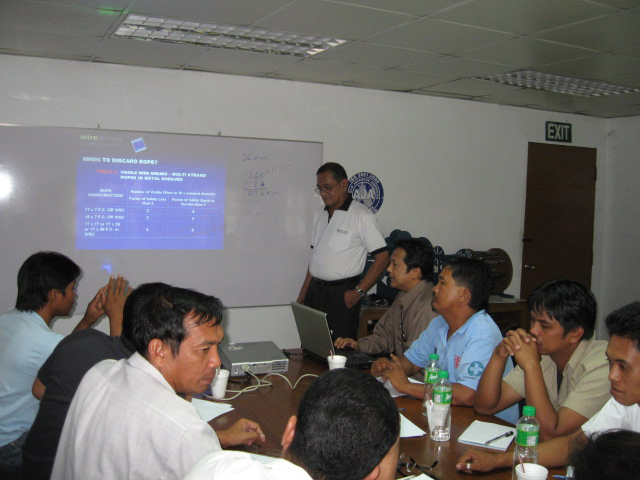In the modern workplace, remote and hybrid work environments have become increasingly common, leading to a shift in how corporate training programs are designed and delivered. Traditional in-person training sessions are no longer the most efficient or practical solution for teams working from home or splitting their time between office and remote locations. As a result, businesses must adapt their training strategies to ensure employees are equipped with the skills, knowledge, and motivation needed to succeed in a more flexible work environment.
In this post, we’ll explore the top five corporate training strategies that can enhance the learning experience for remote and hybrid teams, fostering employee growth and improving team performance.
1. Microlearning: Short, Focused Modules
One of the most effective ways to train remote and hybrid teams is through microlearning. Microlearning involves breaking down complex information into small, easily digestible chunks, typically delivered in under 10-minute modules. This approach aligns well with the needs of remote employees, who often juggle multiple tasks or face time zone challenges.
Why It Works:
- Convenience and Flexibility: Microlearning modules are easy to access from anywhere, at any time. Employees can complete them during a break or between meetings, making it easier for them to fit training into their schedules.
- Higher Retention: Research suggests that people retain information better when it’s delivered in bite-sized pieces, allowing them to absorb and apply what they’ve learned immediately.
- Cost-Effective: Because microlearning modules are short, they require less time to create and update, reducing the overall cost of training programs.
Examples:
- Short, interactive quizzes that reinforce product knowledge.
- Video tutorials that explain specific skills or software.
- Infographics or quick guides that provide actionable insights.
By using microlearning, companies can ensure that employees stay engaged without overwhelming them with lengthy training sessions.
2. Blended Learning: Combining Online and In-Person Training
Blended learning is a hybrid training approach that combines traditional in-person training with online resources, such as webinars, videos, and eLearning modules. For hybrid and remote teams, blended learning offers the flexibility of virtual learning while still incorporating some face-to-face interaction, which can enhance the training experience.
Why It Works:
- Engagement and Interaction: In-person sessions allow for real-time discussions, group activities, and networking, which can help build stronger relationships among team members, even if they’re working remotely the majority of the time.
- Scalability: Online components can be scaled easily to accommodate employees in different locations, while in-person sessions can focus on deepening relationships and solving complex challenges.
- Personalization: Employees can work through the online portion of the training at their own pace, while the in-person sessions can address specific challenges or areas for improvement identified through the online modules.
Examples:
- A leadership development program that combines online video content with in-person workshops or seminars.
- Sales training where employees learn foundational skills online, then participate in role-playing and coaching sessions in person or via live video calls.
Blended learning allows for a mix of asynchronous and synchronous training, catering to various learning styles and enhancing overall retention.
3. Interactive and Gamified Learning
Gamification involves using game mechanics and elements (like points, badges, leaderboards, and challenges) in non-game contexts, such as corporate training. When applied to remote or hybrid teams, gamified learning can make training sessions more engaging, motivating employees to participate and apply what they’ve learned in a fun, competitive environment.
Why It Works:
- Engagement: Gamification taps into intrinsic motivations by making learning more enjoyable, which can increase participation rates and keep employees interested.
- Instant Feedback: Employees can see their progress in real time, which helps them stay on track and make improvements where necessary.
- Friendly Competition: Leaderboards and challenges foster a sense of camaraderie among team members, even when working remotely, encouraging them to push each other to improve.
Examples:
- An onboarding program where employees earn points or badges as they complete different stages, like completing safety training, attending webinars, or passing knowledge checks.
- A sales training program with challenges where team members compete to apply new strategies, with rewards for the highest performers.
By incorporating gamified elements, companies can create a more dynamic and enjoyable learning environment, leading to higher levels of engagement and better outcomes.
4. Social Learning: Fostering Collaboration and Knowledge Sharing
Social learning emphasizes learning from and with others through collaboration and sharing knowledge. For remote and hybrid teams, creating opportunities for social learning can significantly improve training effectiveness and foster a stronger sense of community among employees.
Why It Works:
- Peer-to-Peer Learning: Employees can learn from each other by sharing experiences, insights, and best practices, which can be particularly valuable for remote workers who may lack face-to-face interactions.
- Collaboration: Social learning tools, such as online discussion forums, group projects, and peer feedback, encourage employees to engage with one another, share resources, and solve problems together.
- Networking: It gives remote and hybrid employees an opportunity to connect with colleagues they might not interact with otherwise, broadening their perspectives and building relationships.
Examples:
- A collaborative learning platform where employees contribute and comment on articles, videos, or other resources.
- Regular “lunch and learn” sessions held virtually, where employees present on a specific topic or share their expertise.
- Using Slack channels or Teams groups for ongoing discussions and knowledge-sharing.
Social learning tools help remote and hybrid teams stay connected and foster a culture of continuous learning.

5. Continuous Learning and Development
Corporate training doesn’t stop after a single session or course. To support remote and hybrid teams effectively, businesses should emphasize continuous learning and development. A culture of ongoing education helps employees stay up-to-date with industry trends, hone their skills, and advance in their careers.
Why It Works:
- Skill Development: Remote and hybrid employees can access training resources at any time, allowing them to continuously enhance their skills without waiting for formal training sessions.
- Motivation: By providing ongoing opportunities for learning and growth, employees feel supported and more invested in their roles and the company’s success.
- Employee Retention: Employees are more likely to stay with a company that prioritizes their professional development, especially when they have access to relevant, flexible learning resources.
Examples:
- Offering a library of on-demand courses that employees can access whenever they want to learn new skills or improve existing ones.
- Providing mentorship programs where experienced employees guide newer ones through career development and skill-building.
A focus on continuous learning ensures that employees are always improving and adapting to the evolving demands of their roles, especially in fast-changing environments.
Conclusion
Training remote and hybrid teams requires flexibility, creativity, and a strong understanding of how these employees work best. By adopting strategies such as microlearning, blended learning, gamification, social learning, and continuous development, companies can create effective and engaging training programs that keep their teams motivated, skilled, and productive.
When done right, these strategies not only improve employee performance but also strengthen company culture, boost engagement, and reduce turnover. Ultimately, investing in the development of remote and hybrid teams will pay dividends in terms of increased efficiency, collaboration, and long-term success.





